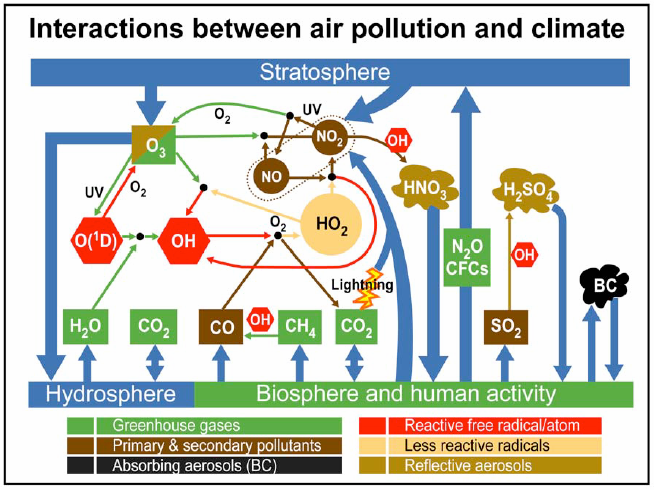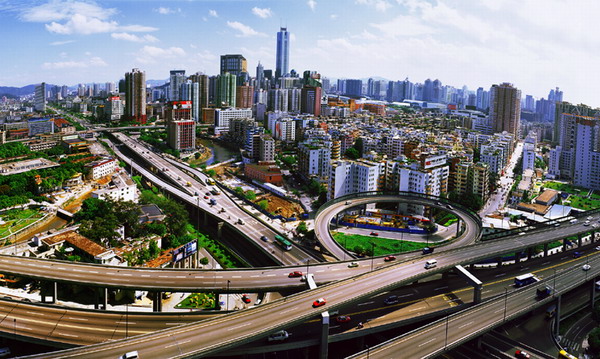In 2008 humanity reached a milestone. For the first time in our history more of us were living in cities than rural environments. Much of that growth has been happening in megacities in the Developing World.
What’s a megacity? By definition it is a city with a population greater than 10 million. On the planet today there are 23. By 2025 we will have 37. By 2050 6.3 billion of us will live in cities.
Between 1995 and 2005, the urban population of the Developing World grew at an average of 1.2 million humans per week. By 2050 the World Health Organization estimates that the urban population of the Developing World will have more than doubled, increasing to almost 5.2 billion.
Why Megacities Represent a Health Challenge
Cities are intensive. Megacities are even more so with high population densities, high energy consumption, high levels of pollution, significant heat islands, and large amounts of emitted greenhouse gases.
Megacities can impact climate locally or regionally. Depending on their location megacities can in large concentration be more impactful on weather than megacities spaced over larger geography. And when you look at the spacing of megacities today and tomorrow you note that most can be found along coastlines.
Coastal megacities and marine environments create an interesting chemical mix. Sulphur and carbon emissions, ground level ozone, nitrogen, smoke and other urban particulate matter interact with seawater and freshwater to produce smog containing lead, carbon monoxide (CO), sulfur dioxide (SO20, nitrogen dioxide (N2O) and ozone (O3). Power plants, necessary for keeping the lights on and homes heated and cooled, are big contributors of sulfur and nitrogen that leads to acidified rain. This effects the biodiversity of adjacent marine and freshwater environments.
Ground level ozone also called tropospheric ozone, to distinguish it from the ozone layer in the high atmosphere, accumulates as a byproduct of nitrogen oxide and sunlight and is an even greater human health hazard than smog. Internal combustion engines are the biggest ozone contributors.
Megacities are notorious for airborne particulate matter from dust to smoke to soot. They like ozone contribute to respiratory illness and impact climate by effecting cloud formation. Industry, energy production and transportation are the major particulate matter contributors.
The Net Health Impact
Megacity pollutants in developing countries cannot be underestimated. In a recent World Health Organization study, 42% of all respiratory diseases in the Developing World were attributed to poor air quality, particulate matter and ozone being the primary culprits. Children were most often the victims with pneumonia, bronchiolitis and bronchitis causing 20% of the 10.6 million child deaths under the age of 5. And when it comes to human illness pollutants don’t stop at the lungs. Research has shown that they impact other body systems including the heart and circulatory system. Pollution can affect heart function, blood pressure, blood coagulation and be a trigger for strokes.
Megacities and Climate
Because megacities are major sources of air and heat pollution even though they only occupy a small percentage of the total land mass of the planet, they play a role in climate change.

The heat island effect of cities with limited forest canopy with concrete and asphalt absorbing solar radiation has a local net temperature increase within megacities and in their immediate hinterland.
Which Cities Are Most at Risk?
Although there are many megacities in the Developed World, they are no longer in high growth mode. It is the cities of the Developing World cities that are about to go “mega” or have already gotten there that are most at risk. The following is a list of some of those cities that are experiencing the issues raised in this blog. Governments at both the national and municipal level in these cities will need to find solutions that mitigate these risks.
Megacities of the Developing World
Abidjan – currently the sixth largest city in Africa, capital of Ivory Coast, with a population of 8.9 million in 2006.
Accra – currently with a population of 5.7 million and the capital of Ghana.
Bangkok -capital of Thailand with a population of 9 million in 2010, growing to 10.1 million by 2015.
Beijing – capital of China with a population of 16.3 million in 2008.
Buenos Aires – capital of Argentina with a population of 13 million in 2010, growing to 13.7 million by 2025.
Bogota – capital of Colombia with a population of 8.5 million in 2010 and projected to grow to 10.5 million by 2025.
Cairo – capital of Egypt with a population of 12.7 million in 2010 and expected to reach 13.75 million by 2015.
Calcutta – in India with a population of 15.6 million in 2010 growing to 17.25 million by 2015.
Delhi – capital of India with a population of 15.1 million in 2010 growing to 16.8 million by 2015.
Dhaka -capital of Bangladesh with a population of 18.3 million in 2010 and growing to 21.1 million by 2015.
Guangzhou – in China with a current population that exceeds 25 million. This city has passed Mexico City to become the second most populous in the world.
Hyderabad – in India with a 2010 population of 9.3 million and growing to 10.5 million by 2015.
Jakarta – capital of Indonesia with a 2010 population of 15.3 million and expected to reach 17.2 million by 2015.
Karachi – Pakistan’s economic capital with a population of 16.6 million in 2010 and growing to 19.2 million by 2015.
Kinshasa – in the Congo with a population of 7.6 million in 2010 and expected to reached 9.4 million by 2015.
Lagos – federal capital of Nigeria with a population surpassing 20 million today and expected to increase to 25 million by 2025.
Lahore – Pakistan’s second largest city with a population of 8.5 million in 2010, growing to 9.96 million by 2015.
Lima – capital of Peru with a population of 8.8 million in 2010, growing to 9.4 million by 2015.
Madras – in India with a 2010 population of 8.2 million growing to 9.14 million by 2015.
Manila – capital of the Philippines with 11.56 million in population based on 2007 data.
Mexico City – the Western Hemisphere’s largest city today and the capital of Mexico with a current population of 21.2 million.
Mumbai – India’s economic capital with a population of 23.6 million in 2010 and growing to 26.1 million by 2015.
Pearl River Delta – a conurbation that includes Hong Kong and outlying cities with a total population of 47.9 million as of 2009.
Rio de Janeiro – grew to 11.9 million in 2010 and is expected to level off at 12.6 million by 2025.
Sao Paulo – the business capital of Brazil with a population of 20.3 million in 2010 and expected to grow to 21.6 million by 2025.
Seoul – the capital of South Korea with a population of 23.9 million in 2008.
Shanghai – China’s financial capital with a population of 19.2 million in 2009.










[…] Urban Landscapes Update: Megacities Impose Health Challenge for Developing World. (2012, October 16). 21st Century Tech Blog. Retrieved May 23, 2014, from https://www.21stcentech.com/urban-landscapes-update-megacities-impose-health-challenge-for-developing… […]